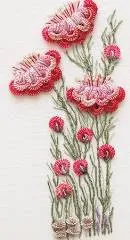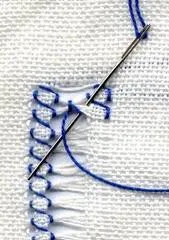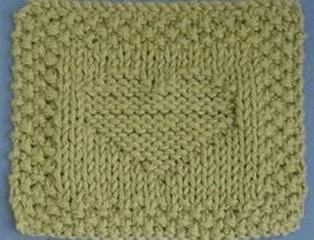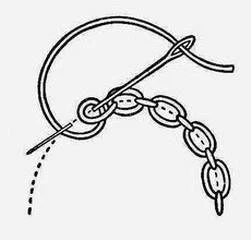Stitching
A stitch is a single loop of thread. Stitching is
the basic element of sewing, knitting, embroidery, crochet, and needle
lace-making, each by hand or machine whether one or more names are used for a
specific purpose.
Backstitch
Backstitch and its variants stem stitch, outline stitch, and split stitch is embroidery and a class of sewing stitches where individual stitches are made behind the general side of the stitch. In embroidery, these stitches create lines and are often used to outline shapes and add subtle details to an embroidered figure. It is also used in embroidery lettering. In the case of hand sewing, it is a utility sewing that connects the two fabrics firmly and permanently. The small stitches done on the back make the backstitch a strong stitch between the basic stitches. Therefore it can be used to sew stiff by hand without a sewing machine.
Basting stitch
A basting stitch is basically a simple stitch, sewn with long stitches and
incomplete edges. Basting stitches are used to temporarily hold fabric pieces
in place. The seam will be removed after the piece is finished. Quilting or
embroidery is often used. To temporarily attach a lace collar, ruffles, or other
trim to the garment so that the attached article can be easily removed for
cleaning or goes after any other garment. For this reason, tacking stitches are
sewn by hand in such a way that they are almost invisible from the outside of
the garment.
Blanket stitch
Blanket
stitch is a stitch used to strengthen the edges of dense materials. Depending
on the situation, it may also be called cable sewing or crochet sewing. It is
seen sewing on both sides of a decorative sewing blanket used to finish an
ornate rug. This sewing has long had an applications such as hand sewing and machine
sewing. When done by hand, it is sometimes considered a crochet stitch, joined
together to form a blanket or other larger item. It is used to sew pieces of
leather together, as is traditionally done by Native American culture and even
to weave basket rims. Whipstitch is also a type of surgical stitching. Blanket
stitching is commonly used as a decorative stitch in clothing arrays. In
addition to blankets, it is used in sweaters, outerwear, swimsuits, home
furniture, pillows, and much more. There are many styles of manufacturing
blanket stitching including rolled, narrow, elastic, and traditional.
Daring stitch
Daring
is the technique of sewing to repair holes or worn areas in fabrics or using
needles and threads alone. This is often done by hand but it is also possible
to color with the help of a sewing machine. Hand darning employs darning
stitching, a simple running stitch in which the thread is woven into rows along
the grains of the fabric, with the stitcher at the end of each row in the
opposite direction and then filling in the framework created as if weaving.
Daring is a traditional method of repairing fabric damage or holes that cannot
run along a seam, and where patching is unscientific or creates discomfort for
wearers, such as a bent ankle.
Hemstitching
Hemstitching
is a decorative stretched threadwork or openwork hand-sewing technique for
decorating clothing or home linen. Unlike a normal hem, hemstitching can employ
embroidery threads in retro colors to be noticeable. In hemstitching, one or
more threads are pulled parallel to the fabric and next to the curved hem, and
the remaining threads are bundled into various decorative patterns while
securing the hem in place. Multiple rows of drawn threadwork can be used. Hand
hemstitching can be simulated by a hemstitching machine that has a perforation
that pierces the holes in the fabric and two separate needles that sew the hole
open. There are also hemstitched attachments for home sewing machines and
simple decorative stitches with overdrawn threads can be used to suggest hand
hemstitching.
Overcast stitching
Overcast
stitching is a type of sewing that is used to enclose any raw, or incomplete,
seam or edge. The purpose is to prevent fabric. Hand overcast stitching
involves small, evenly distant diagonal stitches that bind the raw edge of the
fabric. To create an overcast stitch with the help of a sewing machine, an
overcast leg or a regular leg can be used. The overcast leg has an edge guide
that helps the fabric feed a bar evenly between the edge and the sea which
controls the stitching and keeps it beautiful and flat. Overcast stitches can
be reversible when they are used to join together crochet block pieces of
Afghan blankets. There are different types of overcast stitches. A straight
overcast stitch is used to finish the edges in the eyelet and cutwork. A
blanket stitch, used to finish the edges of wool blankets, is another common
overcast stitch.
Pad stitching
Pad stitches are a type of running stitch made by
keeping short stitches along the sewing line. It secures two or more layers
together and reinforces the layers and, small and dense stitches create more
firmness. These can also be used to apply the overall curvature of the layers.
To give them extra visibility and maintain their curvature, Taylor's pads sew
the lapel and undercool of a jacket. The sewing line usually runs parallel to
the most important curve of the layers. For example, the pad stitches of the
soup lapel are run parallel to the roll line of the lapel. The under-collar
pads of a suitable jacket are operated parallel to the back edge of the sewing
collar.
Tent stitching
A tent stitch is a small, diagonal embroidery stitch
that forms a slit stitch at a 45-degree angle that is crossed with a horizontal
and vertical thread on the canvas. It is also known as needle sweep point
stitching and is one of the most basic and versatile stitches used in
embroidery for needlepoint and other canvas work. When working on a fine weave
canvas on a single warp and weft thread, it is known as a petite point in
contrast to the stitches, such as goblin, worked on multiple warps and/or weft
threads. There are three types of tent stitch, all creating the same look on
the front of the canvas, but each worked in a slightly different way and has
special features, uses, advantages, and disadvantages. These forms of tent
stitching are known as basket flock, continental, and semi-cross tent
stitching.
Chain stitching
Chain stitching is a sewing method that is a series
of loop stitches that form a chain-like pattern. It is an ancient craft -
examples of Chinese chain sewing embroidery working on silk thread are given
from the date of the Waring States period. Handmade chain sewing does not
require embroidery as the needle goes through multiple layers of fabric. For
this reason, sewing is an effective surface decoration around the seams on the
finished fabric. While chain stitches can create flowing, curved lines, they
are used in many surface embroidery styles that mimic drawing on threads.
Satin stitching
Satin stitching is a series of flat stitches that are used to completely cover a part of the background fabric. Short rows of standard satin stitch can be executed using a zigzag stitch or a special satin stitched foot. To maintain a smooth edge, the shapes can be outlined with a back, split, or chain stitch before the whole shape is outlined with satin stitching. Machine-made satin stitching is often used to create and connect the outline of applications with ground fabric.


















0 Comments